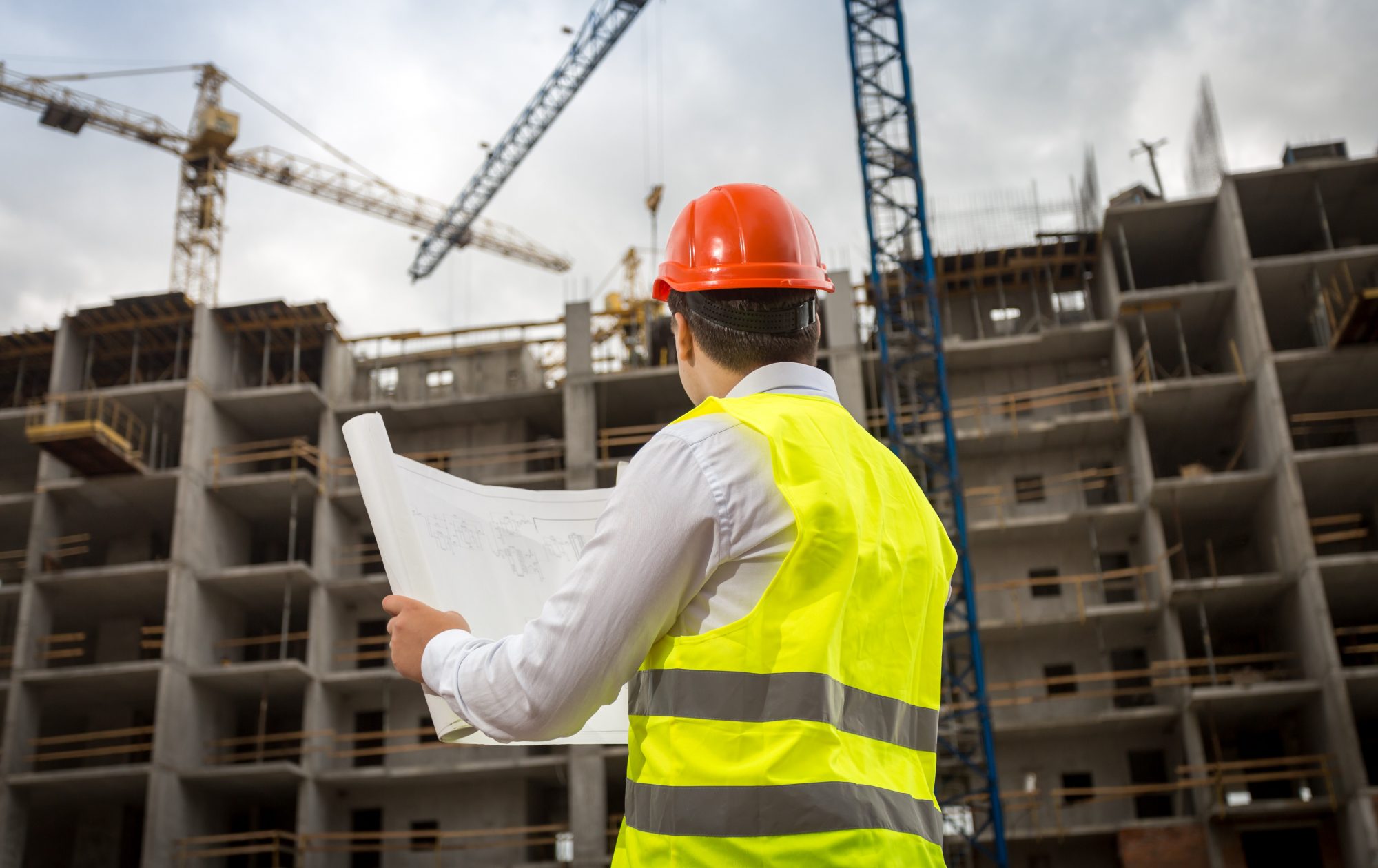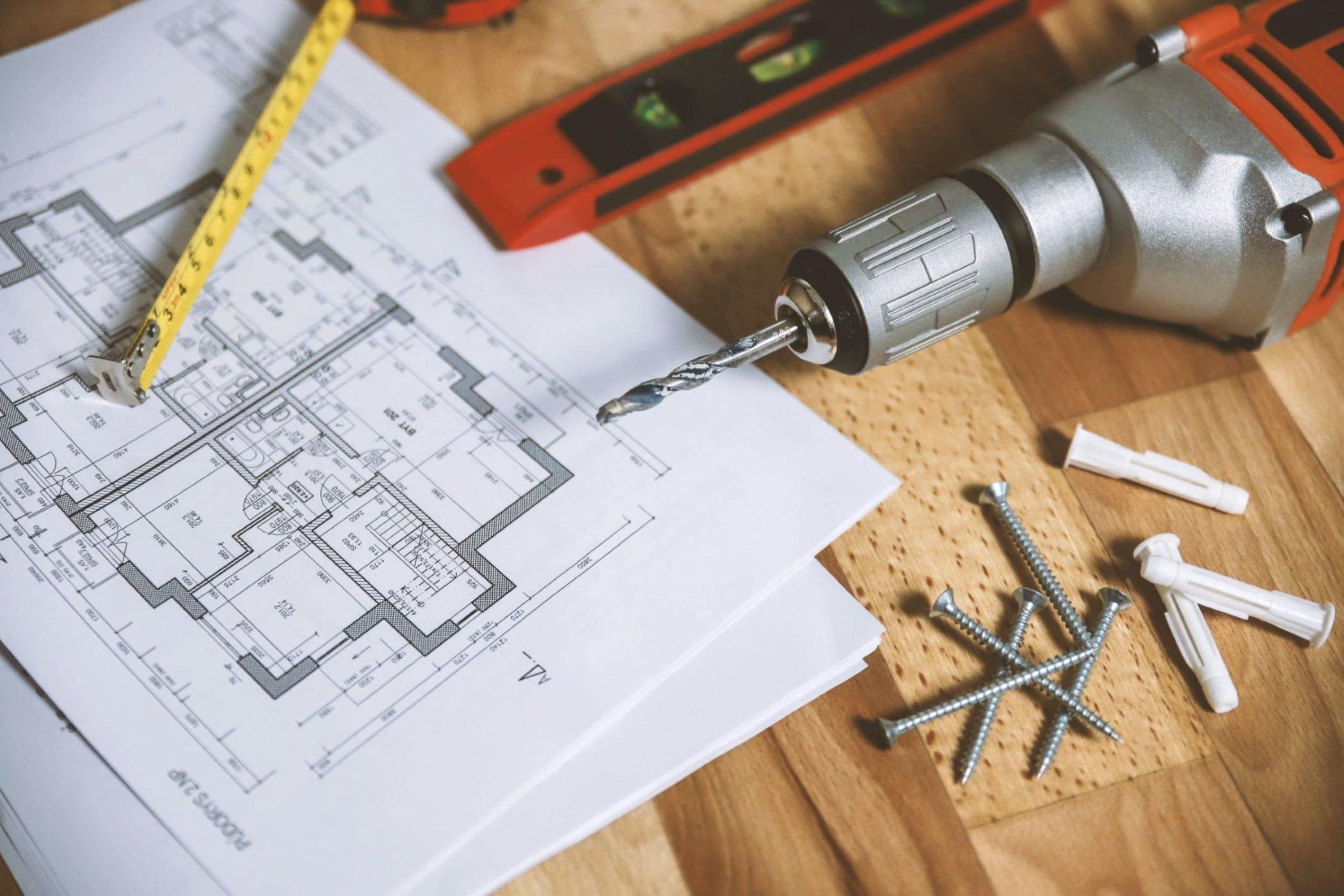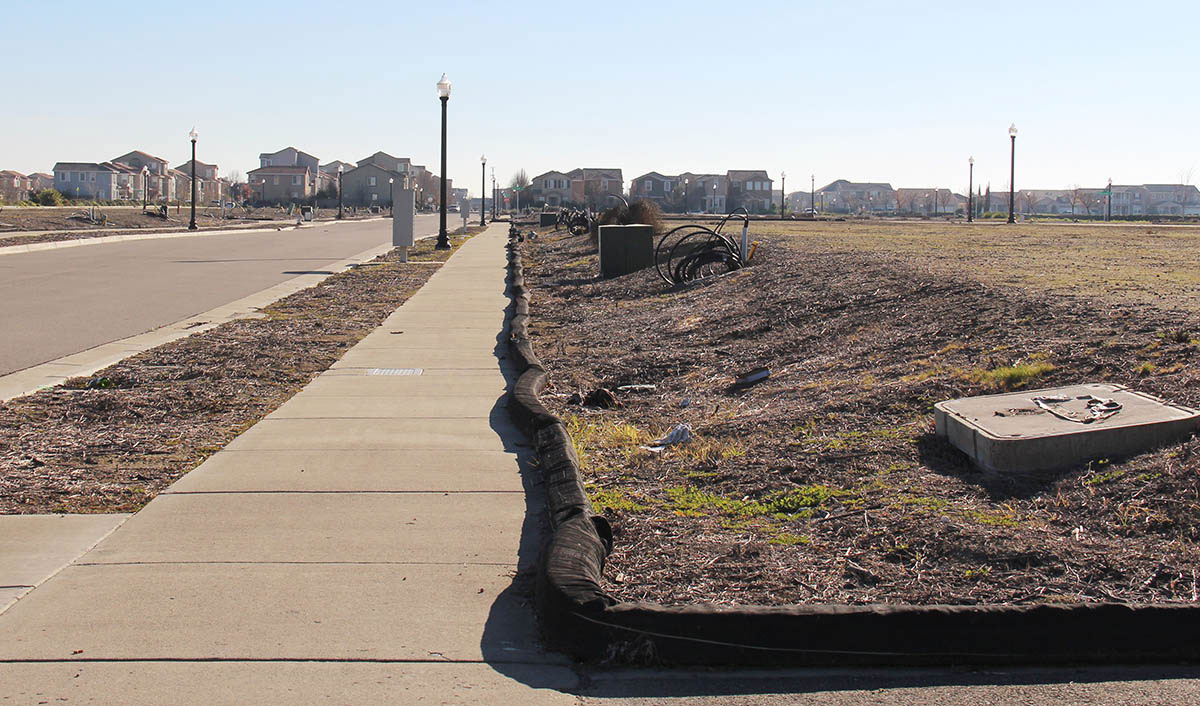Home>diy>Building & Construction>What Is Construction Project


Building & Construction
What Is Construction Project
Modified: May 6, 2024
Learn what construction projects entail and the various aspects involved in building construction. Understand the process, stages, and key considerations for successful projects.
(Many of the links in this article redirect to a specific reviewed product. Your purchase of these products through affiliate links helps to generate commission for Storables.com, at no extra cost. Learn more)
Introduction
When you think of massive skyscrapers, intricate bridges, or sprawling highways, you can’t help but marvel at the engineering and construction expertise involved in bringing these structures to life. Behind every awe-inspiring construction project is meticulous planning, skilled craftsmanship, and a team of dedicated professionals. A construction project is a carefully orchestrated endeavor that transforms blueprints and designs into tangible structures that define our built environment.
Construction projects vary in scope, scale, and complexity – from small residential renovations to large-scale commercial developments. Regardless of the size, they all follow a general framework, encompassing various phases and involving numerous stakeholders. Understanding the key components, roles, and processes of a construction project is crucial in ensuring its success.
This comprehensive guide will provide an in-depth overview of construction projects, from defining what they entail to exploring the essential elements that contribute to their seamless execution. Additionally, we will discuss the various phases involved in a construction project and shed light on the key challenges faced by industry professionals.
Whether you are a construction enthusiast eager to learn more about the intricacies of building projects or a professional looking to enhance your understanding of the field, this article will serve as a valuable resource.
So, grab your hard hat and let’s delve into the world of construction projects, where dreams take shape and architecture becomes reality.
Key Takeaways:
- Construction projects require meticulous planning, skilled execution, and effective project management. Understanding key components, roles, and phases is crucial for successful project realization.
- Anticipating and proactively addressing common challenges in construction projects through effective project management and collaboration is essential for project success.
Definition of Construction Project
A construction project is a carefully planned and organized undertaking aimed at creating, modifying, or repairing structures, infrastructure, or facilities. It involves a series of coordinated activities that span from initial concept and design to procurement, construction, and project completion.
At its core, a construction project involves transforming ideas and specifications into tangible outcomes. These outcomes can range from residential buildings, commercial complexes, industrial facilities, bridges, tunnels, roads, and much more. Regardless of the project type, a construction project requires the integration of various resources, including labor, materials, equipment, finances, and time, to achieve the desired objectives.
Construction projects can be categorized based on their complexity, scale, purpose, and sector. They can vary from small-scale renovations or repairs to large-scale projects that involve the construction of iconic landmarks or infrastructure systems.
One of the defining characteristics of a construction project is its temporary nature. Unlike manufacturing operations or routine service provisions, which are repetitive and continuous, construction projects have a defined start and end date. Once the project is completed, the construction site transitions into a functional structure that serves its intended purpose.
Moreover, construction projects are often unique and bespoke, tailored to the specific requirements and visions of clients and stakeholders. Each project has its own set of challenges, specifications, and intricacies that require careful consideration and specialized expertise.
Due to their complexity and multidisciplinary nature, construction projects require effective project management and a collaborative approach among various stakeholders, including architects, engineers, contractors, subcontractors, suppliers, regulatory authorities, and clients. Effective communication, coordination, and documentation are crucial for ensuring project success.
Throughout the lifecycle of a construction project, numerous factors must be considered, such as budgeting, risk management, quality control, environmental impact, safety, and legal compliance. Close attention is paid to details, as even a small error or oversight can have significant consequences on the project’s outcome and overall success.
In summary, a construction project is a temporary and coordinated effort aimed at transforming concepts into physical structures. It encompasses a range of activities, involves multiple stakeholders, and necessitates effective project management to achieve the desired results within specified parameters.
Key Components of a Construction Project
A construction project consists of several key components that work together to ensure its successful execution. Understanding these components is essential for efficient project planning, resource allocation, and coordination. Let’s explore the major elements that contribute to a construction project:
- Project Scope: The project scope defines the boundaries and objectives of the construction project. It outlines the desired outcomes, deliverables, and the work that needs to be accomplished. This includes the type of structure, its size, purpose, and any additional features or functionalities.
- Project Budget: The project budget refers to the estimated financial resources required to complete the construction project. It includes costs associated with labor, materials, equipment, permits, inspections, and any other relevant expenses. Effective budget management is crucial to avoiding cost overruns and ensuring the project remains financially viable.
- Project Schedule: The project schedule outlines the sequence of activities and the timeline for completion. It includes important milestones, deadlines, and dependencies to ensure that tasks are performed in a logical order and within predefined timeframes. A well-developed schedule helps manage project resources efficiently and allows for timely completion.
- Project Team: The project team consists of individuals who collaborate to bring the construction project to fruition. This includes architects, engineers, project managers, subcontractors, suppliers, and various other specialists. Each team member has specific roles and responsibilities to contribute their expertise and ensure the smooth progression of the project.
- Resource Management: Construction projects require effective management of resources such as labor, materials, and equipment. Labor resources involve skilled workers, contractors, tradespeople, and supervisors who contribute their expertise. Materials management involves procurement, delivery, and storage of construction materials, while equipment management involves acquiring, operating, and maintaining the necessary tools and machinery.
- Risk Management: Construction projects inherently involve risks that can impact the project’s success. Proper risk management involves identifying potential risks, assessing their impact, and implementing strategies to mitigate or eliminate them. This includes proactive measures for safety, quality control, environmental considerations, and adherence to applicable regulations.
- Communication and Collaboration: Effective communication is vital in a construction project to ensure clear exchange of information, coordination among team members, and resolution of issues. Regular project meetings, progress reports, and documentation facilitate smooth collaboration and help address any challenges or changes that arise during the project lifecycle.
- Quality Control: Quality control measures are implemented to ensure that the construction project meets the required standards and specifications. This involves inspections, testing, monitoring, and adherence to applicable codes and regulations. Quality control measures help identify and rectify any deviations early on, reducing rework and ensuring the final product meets the client’s expectations.
These key components intertwine throughout the entire construction project, guiding its progress and ensuring that the project is completed successfully. By understanding and effectively managing these elements, project teams can maximize efficiency, minimize risks, and deliver high-quality results.
Roles and Responsibilities in a Construction Project
A construction project involves the collaboration of multiple stakeholders, each with distinct roles and responsibilities. Understanding the various roles and how they contribute to the project’s success is critical for effective project management. Let’s explore some of the key roles and responsibilities typically found in a construction project:
- Client: The client is the individual or organization for whom the construction project is being carried out. Their role is to provide the project requirements, vision, and financing. They work closely with the project team to ensure that their objectives are met and that the project is delivered according to their expectations.
- Project Owner: The project owner is the individual or entity that has legal ownership or control of the project. They may be the client or a separate entity, such as a developer or an agency. The project owner is responsible for project initiation, setting project goals, and overseeing its progress. They provide the necessary resources and make key decisions regarding project scope, budget, and schedule.
- Architect: The architect is responsible for designing the building or structure in accordance with the client’s requirements, regulations, and best practices. They create the architectural drawings and plans that serve as the foundation for the construction project. The architect works closely with the client to understand their vision and ensures that the design aligns with their needs and aesthetic preferences.
- Engineer: Engineers play a vital role in construction projects, providing their expertise in areas such as civil, structural, electrical, or mechanical engineering. They are responsible for ensuring that the design is structurally sound, safe, and meets all technical requirements. Engineers work closely with the architect and contractors to address any design challenges, conduct feasibility studies, and provide technical guidance throughout the project.
- General Contractor: The general contractor is responsible for overseeing the overall execution of the construction project. They manage the day-to-day operations, coordinate subcontractors, and ensure that the project stays on schedule and within budget. The general contractor serves as the main point of contact between the client, design professionals, and subcontractors, and is responsible for the overall quality and successful completion of the project.
- Subcontractors: Subcontractors are specialized tradespeople or companies hired by the general contractor to perform specific tasks or trades within the project. They may include electricians, plumbers, carpenters, or HVAC technicians. Subcontractors are responsible for their respective areas of expertise and work under the direction of the general contractor to complete their assigned portions of the construction project.
- Supplier: Suppliers provide the necessary materials, equipment, and resources required for the construction project. This may include concrete, steel, lumber, plumbing fixtures, or electrical components. Suppliers play a critical role in ensuring that the project has access to quality materials and timely delivery.
- Project Manager: The project manager is responsible for overall project coordination, including planning, organizing, and managing all aspects of the construction project. They ensure that the project progresses according to the established scope, budget, and schedule. The project manager acts as a liaison between the client, design professionals, general contractor, and other stakeholders, overseeing the day-to-day operations and communication among team members.
These roles and responsibilities work together in a construction project, each contributing their expertise to ensure a smooth execution. Effective communication, collaboration, and coordination among these stakeholders are essential for achieving project goals and delivering a successful outcome.
Phases of a Construction Project
A construction project typically goes through several distinct phases, each with its own set of activities and objectives. These phases outline the progression of the project from the initial concept to its completion and handover. Understanding these phases is essential for effective project planning and management. Let’s explore the common phases of a construction project:
- Project Planning and Design: In this phase, the project objectives, scope, and requirements are defined. The client and design professionals, such as architects and engineers, collaborate to develop the project concept and create detailed designs and plans. The project budget, schedule, and resources are determined during this phase, laying the foundation for the construction process.
- Procurement and Contracting: Once the design is finalized, the project moves into the procurement and contracting phase. This involves sourcing and procuring the necessary materials, equipment, and services required for the construction project. Contracts are entered into with subcontractors, suppliers, and other relevant parties. This phase also includes obtaining permits and approvals from regulatory authorities.
- Construction and Execution: The construction and execution phase is where the physical construction of the project takes place. The general contractor oversees the construction activities, coordinating with subcontractors, suppliers, and other stakeholders. This phase involves site preparation, excavation, foundation construction, building erection, installation of systems and finishes, and various other tasks to bring the project to life.
- Project Completion and Handover: When the construction work is nearing completion, a comprehensive inspection is conducted to ensure that all elements of the project meet the required standards and specifications. Any deficiencies or outstanding works are addressed, and the final touches, such as landscaping and final finishes, are completed. Once the project is considered complete, it is handed over to the client for occupancy or operation.
These phases are not necessarily linear, and there can be overlapping or iterative processes as the project progresses. Effective project management ensures that each phase is meticulously planned and executed, with proper coordination and communication among all stakeholders.
It is worth mentioning that some large-scale construction projects may have additional phases, such as feasibility studies, environmental impact assessments, or post-construction evaluation. These additional phases enhance the overall project management process and ensure long-term success and sustainability.
By understanding the phases of a construction project, project teams can effectively allocate resources, manage risks, and ensure that the project progresses smoothly from inception to completion.
Project Planning and Design
The project planning and design phase is a crucial initial stage of a construction project. It sets the foundation for the entire project, encompassing the conceptualization, planning, and development of the construction project. During this phase, key project objectives, scope, and requirements are established while ensuring that the design meets the desired outcome. Let’s delve into the key aspects of the project planning and design phase:
Concept Development: The project planning and design phase begins with conceptualizing the project. The client communicates their vision, requirements, and goals to the design team. Architects and engineers work closely with the client to understand their needs and translate them into a conceptual design that aligns with the project’s purpose.
Feasibility Assessment: During this phase, the feasibility of the project is evaluated. Key factors such as budget, site conditions, environmental considerations, regulatory requirements, and technical feasibility are assessed to determine the project’s viability. Feasibility studies may include site surveys, soil testing, and market research to gauge the project’s potential success.
Design Development: Once feasibility is established, the design team progresses to the development of detailed designs and plans. Architects create architectural drawings and models that outline the project’s layout, elevation, and overall aesthetics. Engineers contribute technical specifications and calculations to ensure that the design is structurally sound and meets applicable codes and standards.
Cost Estimation: The project planning and design phase involves estimating the project’s cost. The design team, in collaboration with quantity surveyors or cost consultants, assesses the quantities and costs of materials, labor, equipment, and any other resources required for construction. Cost estimation helps in budget allocation and informs decisions regarding project feasibility and financing.
Schedule Development: Creating a project schedule is an integral part of the planning phase. The design team, together with project managers and contractors, establishes a timeline for the project. This includes determining the start date, project duration, and key milestones throughout the project’s lifecycle. The schedule ensures that resources are allocated efficiently and that the project is completed within the specified timeframe.
Permits and Approvals: In this phase, the necessary permits and approvals from regulatory authorities are obtained. This may include building permits, environmental clearances, zoning approvals, and other legal requirements. Compliance with local regulations is essential to ensure the project’s adherence to safety, health, and environmental standards.
Value Engineering: Value engineering is a process that aims to optimize the project by finding cost-effective alternatives without compromising quality or functionality. The design team and project stakeholders collaborate to identify opportunities for cost savings, efficiency improvements, and value enhancements. Value engineering ensures that the project achieves the desired outcome while being mindful of the budget.
Client Approval: Once the project plans are finalized, they are presented to the client for review and approval. The client ensures that the design aligns with their expectations, vision, and budget. Feedback and modifications may be incorporated during this phase to accommodate the client’s preferences while maintaining the project’s overall feasibility and integrity.
Efficient project planning and design lay the groundwork for a successful construction project. Clear communication, collaboration, and attention to detail during this phase help mitigate future risks and facilitate the smooth progression of the project. By establishing a solid foundation, the project is better positioned to meet the client’s requirements, fulfill its objectives, and move onto the next phase with confidence.
A construction project is a planned undertaking to build, renovate, or repair a structure. It involves detailed planning, budgeting, scheduling, and coordination of various trades and suppliers. Effective communication and project management are essential for successful completion.
Procurement and Contracting
The procurement and contracting phase of a construction project is a crucial stage that involves the sourcing, selection, and management of the necessary resources, materials, and services to bring the project to fruition. This phase focuses on establishing contracts, obtaining approvals, and ensuring timely delivery of resources. Let’s dive into the key aspects of the procurement and contracting phase:
Sourcing and Vendor Selection: The procurement process begins with identifying and sourcing the materials, equipment, and services required for the construction project. This involves researching suppliers, obtaining quotes, and evaluating potential vendors based on their expertise, quality, reliability, and pricing. Thorough evaluation and due diligence are essential to select the most suitable vendors.
Contract Negotiation and Agreements: Once vendors are selected, the next step is to negotiate and establish contracts. Contracts outline the terms and conditions of the agreement between the client and the vendors or subcontractors. Key contractual elements may include project scope, delivery timelines, payment terms, performance guarantees, and dispute resolution mechanisms. Clear and well-defined contracts minimize misunderstandings and mitigate risks.
Permitting and Approval Processes: The procurement and contracting phase also includes obtaining the necessary permits and approvals from relevant authorities. This may involve submitting applications, attending hearings, and fulfilling regulatory requirements. Compliance with local regulations and obtaining the required permits is crucial to ensure the project proceeds in accordance with legal and environmental guidelines.
Cost Management: Effective cost management is a vital aspect of procurement and contracting. Project teams track and monitor costs to ensure they align with the project budget. This involves comparing actual costs against estimated costs, making adjustments if necessary, and keeping accurate records of expenditures. Strict cost control helps avoid budget overruns and contributes to the financial success of the project.
Supplier Management: Once contracts are finalized, the project team oversees the management of the selected suppliers and subcontractors. This includes ongoing communication, coordination, and monitoring of their performance. It is important to maintain positive vendor relationships, address any issues promptly, and ensure timely delivery of materials and services.
Quality Assurance: The procurement and contracting phase also involves ensuring the quality of the procured materials and services. Quality assurance measures, such as conducting inspections, testing, and quality control checks, help maintain the desired standards. This ensures that the materials and services meet the project’s specifications, regulatory requirements, and client expectations.
Risk Management: During procurement and contracting, attention is given to identifying and managing potential risks. This may include risks related to delays in delivery, supplier reliability, contractual disputes, or cost variations. Strategies for risk mitigation are put in place to minimize any negative impact on the project and ensure its successful execution.
Documentation and Record-Keeping: Proper documentation and record-keeping are crucial during procurement and contracting. Contracts, purchase orders, invoices, delivery receipts, and other relevant documents are maintained to track the procurement process. Detailed records provide transparency, facilitate project audits, and aid in resolving any disputes that may arise later in the project life cycle.
The procurement and contracting phase is a fundamental component of a construction project. It ensures the timely availability of resources, materials, and services necessary for construction. By carefully managing procurement processes, implementing robust contracts, and maintaining effective vendor relationships, project teams can support the smooth progression of the project and keep it on track towards successful completion.
Construction and Execution
The construction and execution phase is the heart of a construction project. It involves the actual physical construction of the project, translating the plans and designs into a tangible structure. This phase requires meticulous coordination, skilled craftsmanship, and adherence to safety and quality standards. Let’s explore the key aspects of the construction and execution phase:
Site Mobilization: The construction and execution phase begins with site mobilization, which includes setting up temporary facilities, establishing access points, and ensuring the construction site is safe and secure. This involves installing site offices, storage areas, fencing, signage, and utilities required for construction activities.
Site Preparation: Before the actual construction work begins, the construction site needs to be prepared. This may involve clearing vegetation, removing existing structures, excavating the site, and leveling the ground. Site preparation ensures a clean slate for construction and provides a stable foundation for the new structure.
Foundation Construction: The foundation is critical to the stability and structural integrity of the building. During this phase, excavation is carried out to create the necessary foundation footprint. Reinforcements and formwork are installed, followed by the casting of concrete to create the foundation walls and footings. The foundation is allowed to cure before proceeding with vertical construction.
Building Erection: Vertical construction involves erecting the structural elements of the building. This phase includes assembling and installing the structural frameworks, such as steel beams, columns, and trusses, or constructing load-bearing walls using traditional masonry or modern precast methods. As the building takes shape, floors, walls, and roof systems are added, creating the framework for the interior and exterior spaces.
Systems and Infrastructure Installation: Once the building is erected, the installation of various systems and infrastructure takes place. This includes electrical and plumbing systems, HVAC (heating, ventilation, and air conditioning), fire protection systems, elevators, and other mechanical and electrical components. Skilled tradespeople and specialists ensure that these systems are installed correctly to meet safety and functional requirements.
Interior and Finishing Work: The interior and finishing work focuses on transforming the construction into a functional space. This phase involves the installation of interior walls, flooring, ceilings, doors, and windows. Plumbing fixtures, electrical outlets, lighting fixtures, and other finishing touches are added to complete the interior spaces. Finishing work also includes painting, tiling, and other aesthetic enhancements.
Testing and Commissioning: Once construction is complete, thorough testing and commissioning activities take place. This involves inspecting and verifying the functionality of the building systems, ensuring they operate safely, efficiently, and in compliance with specifications. This includes tests such as electrical load tests, water pressure tests, fire safety checks, and performance evaluations to ensure everything is in working order.
Quality Control and Assurance: Throughout the construction and execution phase, quality control measures are implemented to ensure that the completed work meets the required standards and specifications. Quality control involves conducting inspections, monitoring work progress, and taking corrective measures if any deviations or defects are identified. This ensures that the finished structure is of high quality and meets the client’s expectations.
Safety and Risk Management: Safety is a top priority during construction. The construction and execution phase involves implementing comprehensive safety measures, such as providing personal protective equipment (PPE), training workers on safety protocols, and conducting regular safety inspections. Risk management strategies are put in place to identify and mitigate potential hazards, ensuring a safe working environment for all involved.
The construction and execution phase is a dynamic and challenging stage of a construction project. It requires close collaboration among the project team, effective management of resources, and attention to detail. Successful execution ensures that the construction project progresses smoothly, maintaining quality, safety, and adherence to project timelines.
Project Completion and Handover
The project completion and handover phase marks the final stage of a construction project. It involves the finalization of construction activities, inspection of completed work, addressing any outstanding items, and ultimately handing over the project to the client for occupancy or operation. Let’s explore the key aspects of the project completion and handover phase:
Final Inspections: Prior to project completion, comprehensive inspections are conducted to ensure that all aspects of the construction work have been completed according to the plans, specifications, and applicable regulations. This includes inspections by building and safety inspectors, third-party professionals, and the project team. The purpose of these inspections is to identify any outstanding issues or defects that need to be addressed before final handover.
Deficiency Rectification: If any deficiencies are found during the final inspections, the construction team addresses them promptly. This may involve repairs, corrections, or replacements to ensure that the project meets the required standards and specifications. Deficiency rectification ensures that the completed project is of high quality and ready for use.
Document Preparation: As the project nears completion, the necessary documentation is prepared for handover. This includes compiling operation and maintenance manuals, as-built drawings, warranties, guarantees, and any other relevant project documentation. Proper documentation provides vital information to the client for the continued operation, maintenance, and future renovations of the structure.
Final Testing and Commissioning: Before the project is officially handed over, final testing and commissioning activities are conducted. This involves retesting and validating the functionality of all systems and components, ensuring that they operate as intended. This may include tests such as HVAC performance tests, fire safety drills, electrical load tests, and other performance evaluations.
Client Acceptance and Approval: Once the project is deemed complete and all necessary inspections and rectifications are done, the client conducts their final walkthrough and inspection. If the client is satisfied with the completed work, they provide their acceptance and approval for the project. This signifies that they are ready to take ownership or begin operations in the structure.
Handover Process: After client acceptance, the official handover process takes place. This involves transferring the responsibility, control, and ownership of the project from the construction team to the client. The handover may involve formal documentation, signing of contracts, and the exchange of keys and relevant project records. The client assumes responsibility for operating, maintaining, and utilizing the completed structure.
Project Closeout: The project closeout phase involves wrapping up all contractual and administrative obligations. This includes settling final payments, finalizing contracts with subcontractors and vendors, obtaining necessary clearances and certifications, and closing out financial accounts. It also involves archiving project documentation for future use and conducting post-project evaluations to identify lessons learned and areas for improvement.
The project completion and handover phase is a critical milestone in a construction project. It signifies that the construction work has reached its intended goal and that the project is ready for use. Effective completion and handover ensure a smooth transition from construction to the client, ensuring their satisfaction and the successful realization of their vision.
Common Challenges in Construction Projects
Construction projects are complex endeavors that involve numerous variables, stakeholders, and unpredictable circumstances. Despite careful planning and execution, various challenges can arise throughout the project lifecycle. Being aware of these common challenges enables project teams to proactively address them and mitigate their impact. Here are some of the most common challenges in construction projects:
- Budget and Cost Control: Staying within the allocated budget can be a significant challenge in construction projects. Unforeseen expenses, changes in scope, material price fluctuations, and contractor claims can impact the project’s financial stability. Effective cost monitoring, regular budget reviews, and proactive cost management techniques are vital to mitigate these challenges.
- Timeline and Schedule Management: Meeting project timelines and schedules can be a persistent challenge in construction projects. Delays can occur due to weather conditions, unforeseen site conditions, labor shortages, supply chain disruptions, or design changes. Effective project planning, efficient resource allocation, and proactive schedule monitoring are essential to overcome these challenges and keep the project on track.
- Communication and Collaboration: Construction projects involve multiple stakeholders, including clients, design professionals, contractors, subcontractors, suppliers, and regulatory authorities. Poor communication, misalignment of expectations, and lack of collaboration can lead to errors, delays, and disputes. Open and transparent communication channels, regular coordination meetings, and clear documentation help foster effective collaboration and minimize miscommunication challenges.
- Project Scope Creep: Scope creep refers to uncontrolled and unauthorized changes or additions to the project scope. It can result from vague project requirements, client requests, evolving regulations, or unforeseen conditions. Scope creep can lead to cost overruns, schedule delays, and client dissatisfaction. The implementation of robust change management procedures, careful scoping, and regular project reviews are essential to manage scope creep effectively.
- Quality Control and Assurance: Ensuring quality standards and compliance with design specifications can be a significant challenge in construction projects. Poor workmanship, inadequate materials, and lack of quality control processes can compromise the integrity and performance of the completed structure. Rigorous quality control inspections, testing protocols, and adherence to industry standards are essential to maintain quality throughout the project.
- Risk Management and Safety: Construction sites are inherently hazardous environments, involving various safety risks for workers and the general public. Managing these risks and ensuring a safe working environment is a constant challenge. Effective risk identification, implementation of safety protocols, regular safety training, and ongoing monitoring are paramount to mitigate safety challenges and ensure the well-being of all involved.
- Contractual Disputes: Contractual disputes can arise due to ambiguities, misinterpretations, or breaches of contract terms and conditions. Disagreements relating to payment disputes, change orders, design variations, or project delays can impact project progress and strain relationships among stakeholders. Clear and well-drafted contracts, effective project management, and dispute resolution mechanisms help in minimizing the impact of contractual disputes.
- Environmental Sustainability: With the growing focus on sustainable practices, construction projects face challenges in meeting environmental regulations and minimizing the project’s ecological impact. Incorporating sustainable design principles, adopting eco-friendly materials and construction methods, and ensuring proper waste management are necessary to address these challenges and promote environmental sustainability in construction.
Addressing these common challenges requires a proactive and collaborative approach from all project stakeholders. Effective project management techniques, clear communication, careful planning, and a commitment to quality and safety standards help mitigate these challenges and contribute to the successful completion of construction projects.
Conclusion
Construction projects are multifaceted endeavors that require meticulous planning, skilled execution, and effective project management. Throughout this article, we have explored the various phases, key components, roles and responsibilities, and common challenges involved in construction projects. From the conceptualization and design phase to procurement, construction, and project completion, each stage contributes to the successful realization of the project.
We have learned that project planning and design lay the foundation for an effective construction project, ensuring that the client’s vision is translated into a well-defined scope and set of requirements. The procurement and contracting phase enables the efficient sourcing of materials, selection of vendors, and establishment of contractual agreements, fostering smooth project execution.
During the construction and execution phase, the physical transformation of designs into tangible structures takes place. This phase requires careful coordination, strict adherence to safety protocols, and effective quality control measures. Finally, the project completion and handover phase involves final inspections, addressing any outstanding issues, and officially handing over the project to the client.
However, construction projects are not without their challenges. From budgetary constraints to schedule management, communication gaps, scope creep, and contractual disputes, these challenges can impact the progress and success of a project. It is essential for project teams to anticipate and proactively address these challenges through effective project management techniques, clear communication channels, and collaborative problem-solving.
In conclusion, the successful execution of a construction project requires a combination of technical expertise, strong project management skills, and effective collaboration among all stakeholders. By understanding the key components, roles, and phases of a construction project, project teams can navigate through the challenges, ensure adherence to quality and safety standards, and deliver exceptional results.
So, whether you’re embarking on a small residential renovation or a large-scale commercial development, remember that every construction project is a unique opportunity to shape our built environment. By applying the knowledge gained from this article, you can contribute to the realization of remarkable structures and leave a lasting impact on the communities they serve.
Curious about taking your understanding of construction projects to the next level? Dive deeper into the organizational side with our enlightening discussion on construction management. Here, you'll uncover efficient strategies to oversee complex construction processes seamlessly. Safety is another critical aspect not to be overlooked. Our article on why construction safety matters will guide you through essential practices to ensure a secure work environment, preventing hazards before they arise. Both pieces are packed with insights perfect for expanding your construction knowledge.
Frequently Asked Questions about What Is Construction Project
Was this page helpful?
At Storables.com, we guarantee accurate and reliable information. Our content, validated by Expert Board Contributors, is crafted following stringent Editorial Policies. We're committed to providing you with well-researched, expert-backed insights for all your informational needs.














0 thoughts on “What Is Construction Project”